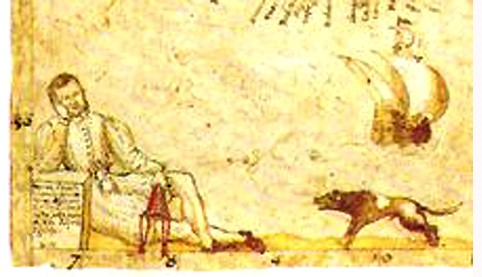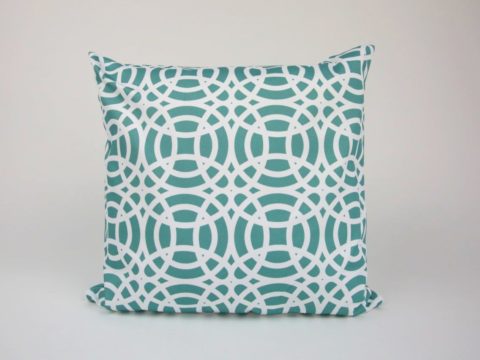William Cecil: Bibliophile & Map Collector
Sir William Cecil was educated at St John’s College, Cambridge, one of the most advanced of the colleges at the time. His friends and colleagues there were all followers of the new humanist ideas that promoted the examination of original texts rather than the endless interpretations and reinterpretations of the works of the mediaeval scholars.
With the fall of Constantinople in 1453, the last remnants of the Roman Empire, a torrent of ancient manuscripts found its way into Europe, in Greek as well as Latin, which inspired the generations that followed to study Greek and classical Latin, rather than the mediaeval Latin into which it had metamorphosed. During his time in Cambridge, and after, Cecil was friends with some of the foremost scholars of the century – Roger Ascham, John Cheke, Thomas Smith. He himself, although never inclining to a career as an academic, did not lose his interest in intellectual matters, even though his own writing style was somewhat turgid.
Throughout out his life, Cecil sought to learn, to gather facts and to know as much as he could about myriad topics, and this was reflected in a passion for collecting books and maps. Between January 1554 and December of the following year, a period during which his political career had taken a pause, there are seventy entries in his accounts for book purchases from the London book-seller William Seres. They include titles on cosmology, geography and navigation, reflecting his interests in maps and the physical world.
On his death in 1598, his will directed that his elder son, Thomas, should inherit ‘all my books in my upper library over my Great chamber in my…. house in Westminster’ together with ‘all my evidence and rolls belonging to my pedigrees’. In common with most gentlemen of the era, Cecil liked to study genealogy and family trees, mainly in the hope of finding illustrious ancestors.
On a sale of some of the Cecil family’s possessions in 1687, the inventory for books listed some 3,645 books and 249 volumes of manuscripts said to be his. The collection is now in four main parts – a great many are in the Cotton Collection at the British Museum, some are in the National Archive, a substantial portion is at Trinity College, Dublin, of which Cecil was Chancellor, and many remain at Hatfield House.
The collection includes mathematical, surveying, mapmaking, artillery building, town planning, and hydrography works.
One of the books in the collection is his Commonplace book (a kind of journal in which information was gathered, notes made and expenses recorded). Cecil’s has a cover of vellum, folded to make a pocket, in which is stored a map of Sicily and one of the British Isles. It also has the distances and travel information for journeys between Antwerp and Dunkirk and Augsburg; and London to Edinburgh. Presumably the information dates from his trip to the continent during Mary’s reign, and his expedition to Edinburgh to negotiate the eponymous treaty in 1560.
Maps
It appears that whilst Cecil liked maps, it was a cerebral matter, rather than a desire for travel, as, according to Henry Peacham’s book, The Compleat Gentleman, published in 1622:
‘If anyone came to the lords of the council for a licence to travel, he would first examine him of England; if he found him ignorant, would bid him stay at home and know his own country first.’
In 1563, Laurence Nowell, an early antiquarian and manuscript collector who worked for Cecil, wrote to him in for support for a map making project. Nowell, using the best “butter”, referred to Cecil’s ‘marvellous pleasure in geographical maps, above all other monuments of the noble arts.’ Cecil commissioned him to undertake a map of a part of the coast of Ireland, and it is likely that Nowell created Cecil’s pocket map of the British Isles referred to above.

Cecil also collected maps from abroad. On 20 February 1567 wrote to Sir Henry Norris, the English Ambassador to France, saying ‘if there be any charts newly printed, I pray you send me a calendar thereof.’ Norris must have found some, as there is a letter from the following July, thanking him for the chart of Paris.
In around 1566, Cecil acquired a collection of engraved maps, compiled in Rome. It is likely that Nowell acted for him.
On 20 May 1570, Cecil acquired one of the earliest copies of Theatrum Orbis Terrarum, the first modern atlas, published that year by the Flemish cartographer, Abraham Ortelius. Cecil hand-wrote his own notes on it.
He also kept detailed notes on the county atlases he collected. These were created during the period 1574 – 1578 by Christopher Saxon. They were engraved plates, and were delivered to Cecil as they were completed. On them, he annotated all the justices in England and Wales, added and corrected place names as well as supplementing the maps with historical, topographical and geographic notes and tables of roads and posts.
In addition to Saxon’s maps, he collected a further 18 manuscript and two other printed maps of the British Isles, before 1595. These were remarked on by a foreign visitor to Theobalds, who noted hanging on the walls:
‘correct landscapes of all the most important and remarkable towns in Christendom’ and in another room, ‘the Kingdom of England, with all its cities, towns and villages, mountains and rivers.’
His interest in maps was obviously widely known. He received presentation copies of the Dutch hydro-cartographer Lucas Waghenaer’s work De Spieghel Der Zeevaerdt.This was translated into English on the orders of the Privy Council, by Anthony Ashley. Cecil took two copies, one to admire, and the other to use as a working copy.
Finally, Cecil’s treasures included a ‘lytle terrestriall Globe with a Lattin Booke that Teacheth the use of my great Globes’. These great globes were made by Emery Molyneux and were 25 inches (c 60cm) in diameter.



